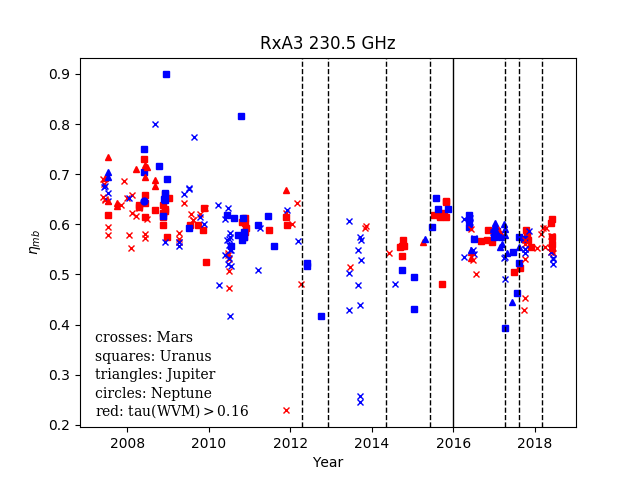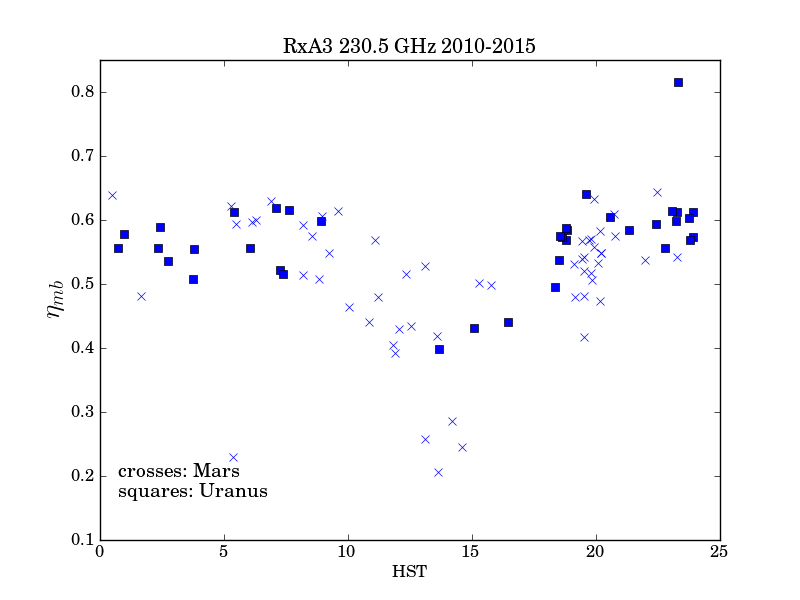Observations of the planets Mars, Jupiter, and Uranus have been made with RxA3 using ACSIS as a backend since 2007. Before the planet observations always a (continuum) pointing observation was done, and usually also a z-focus.
Aperture and beam efficiency have been derived from the planet the observations following the recipes
in Section 9.3 of the Userguide (link), using the STARLINK program FLUXES. We assumed a beamsize for RxA3 of 20 arcseconds at 230.538 GHz (DSB LO frequency 234.538 GHz). For Jupiter and Saturn we used the flux densities in the current (STARLINK) version of scuba2.dat, while for Uranus and Neptune we took the ESA4 flux densities (for this aim three filters were added to the STARLINK version of scuba2.dat).
The following figure shows the beam efficiencies derived from planet observations obtained since 2007 with RxA3. Symbols are crosses – Mars, triangles – Jupiter, squares – Uranus.
The observations in this figure have been made in the UT interval 5h to 19h (HST 19h to 9h). Outside this interval the submillimeter seeing (as observed at the SMA) usually is larger (above 4 arcsec compared to 0.5 arcsec at night) and the telescope surface is deformed because of thermal effects. Blue symbols show observation made in good weather (tau < 0.16).
The full drawn line at the beginning of 2016 indicates the transition from RxA3 to RxA3m, when the receiver got a new mixer.
When clicking on the figure one sees a figure where we distinguish between nighttime and daytime observations (for all tau values).
The figure above shows an apparent decrease in the nighttime (blue) main beam efficiency for RxA3 after about 2009. At the moment the cause of this decrease is unclear.
During several periods (20120413 – 20121201, 20140508 – 20150605, and 20170407 – 20170810) the alignment of RxA3 and the TMU (tertiary mirror) was faulty and intensities were lower than expected. These dates are indicated by dashed lines.
This was traced back to a missing part which caused RxA3 to move after being reinstalled in the receiver cabin following maintenance work. An additional alignment issue was corrected on 20180312.
The ratio of aperture and main beam efficiency ηa/ηmb derived from these data is 0.867 both for Uranus and for Mars.
The RxA3 main beam efficiency versus Hawaii Standard Time for all observations between 2010 and 2015. There is a significant decrease in main beam efficiency during the day, but at all times there is a large range in efficiency. The decrease in efficiency during the day is less on a cloudy day when the Sun does not affect the surface of the dish as much.





